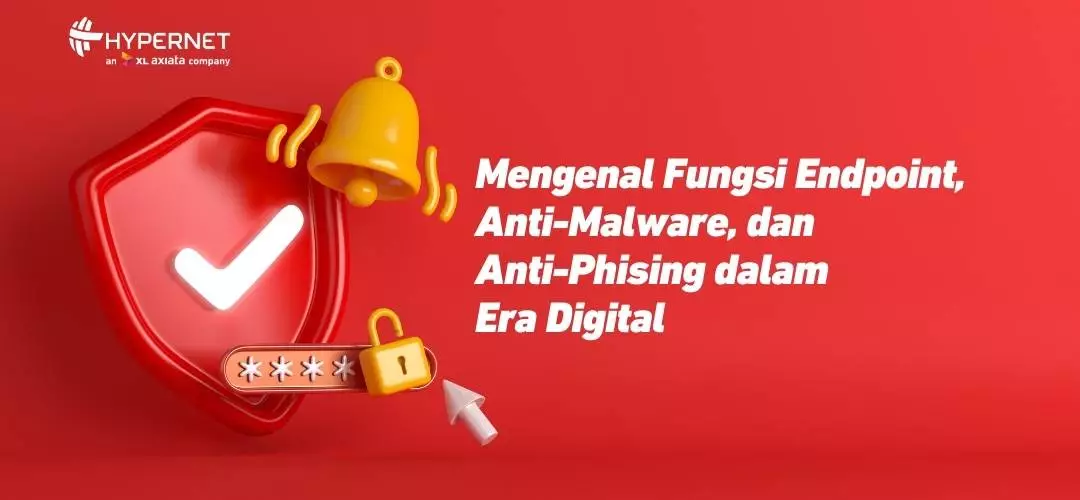The shift from analog to digital era has made everyone expected to be tech-savvy, including business owners. Even if your business has little to do with technology, you need to understand that digital security is crucial for the sustainability of your company. One way to do this is to grasp some important terms in the field of cybersecurity, namely endpoint, anti-malware, and anti-phishing.
Definition and Function of Endpoint
Endpoint is a physical device that connects and exchanges information with a computer network. Some examples of endpoints include mobile devices, desktop computers, virtual machines, embedded devices, and servers. Internet of Things (IoT) devices such as cameras, lights, refrigerators, security systems, smart speakers, and thermostats also serve as endpoints. When a device is connected to a network, the flow of information between them is similar to a conversation between two people over the phone.
The Importance of Endpoint Security
Endpoint protection helps safeguard endpoints from malicious actors and exploitation. Cybercriminals often target endpoints because they serve as gateways to a company’s systems and are vulnerable to attacks.
Endpoint security is essential because data breaches incur significant costs, erode customer trust, result in revenue loss due to system downtime, and tarnish a company’s reputation, potentially leading to its downfall.
How Endpoint Security Works
Through a series of processes, services, and solutions, endpoints can be protected from cyber threats. The primary tool for endpoint security is traditional antivirus and anti-malware software designed to prevent criminals from compromising devices, networks, and services. Nowadays, there are more advanced endpoint security solutions that are cloud-supported and comprehensive. These advanced security measures aid in threat detection, investigation, and response, as well as managing applications, devices, and users.
Definition and Function of Anti-Malware
Anti-malware is software designed to protect IT systems and individual computers from malicious software, commonly referred to as malware. Anti-malware programs scan computer systems to prevent, detect, and remove malware.
How Anti-Malware Works
Anti-malware software employs three strategies to protect systems from malicious software.
Signature-Based Malware Detection
Signature-based malware detection uses a set of known software components and their digital signatures to identify new malicious software. Software vendors develop signatures to detect specific malicious software. These signatures are used to identify previously identified malicious software of the same type and label new software as malware. This approach is useful for common types of malware, such as keyloggers and adware, which share many characteristics.
Behavior-Based Malware Detection
Behavior-based malware detection helps IT professionals quickly identify, block, and eliminate malware by actively analyzing malware behavior. This type of detection identifies malicious software by examining its behavior rather than its appearance. It is designed to replace signature-based malware detection and is sometimes supported by machine learning algorithms.
Sandboxing
Sandboxing is a security feature used in anti-malware to isolate potentially malicious files from the entire system. Sandboxing is often used as a method to filter potentially malicious files and remove them before they can cause damage.
For example, when opening a file from an unknown email attachment, a sandbox will run the file in a virtual environment and only grant it access to limited resources, such as temporary folders, the internet, and a virtual keyboard. If the file attempts to access other programs or settings, it will be blocked, and the sandbox has the capability to halt it.
Definition and Function of Anti-Phishing
Phishing is one of the most commonly discussed cyberattacks. Phishing comes in various forms as it continually evolves and introduces new ways to exploit users’ vulnerabilities. This is why companies must adopt security solutions with anti-phishing capabilities.
Anti-phishing is the practice of using human processes and software to prevent or recover from phishing attacks. Anti-phishing systems can block phishing attempts from entering a company’s email system or prevent users from clicking on malicious links.
Anti-phishing mechanisms often work in conjunction with anti-malware protection, scanning incoming emails and their attachments for malicious content, blocking these dangerous elements from infiltrating users’ systems. This dual-layer protection provides robust defense against ever-evolving cyber threats.
Tips to Prevent Phishing Attacks in Your Company
- Provide employees with training to recognize and prevent phishing.
- Use end-to-end encryption.
- Implement Domain-based Message Authentication, Reporting, and Conformance (DMARC) for message authentication and reporting.
- Use phishing-resistant multi-factor authentication (MFA) passwords.
- Utilize email antivirus and cloud security solutions.
- Deploy dedicated anti-phishing solutions.
Hypernet provides endpoint security, anti-malware, and anti-phishing solutions for your company. Please contact our customer service for the best pricing.



